This post may contain affiliate links. Please read our disclosure policy.
This Korean Cabbage Salad is fresh, crunchy, and full of flavor—with just a few ingredients and a microwave shortcut that makes it super practical.
It’s simple enough for everyday meals, but still delivers that bold, savory punch you’d expect from a good Korean banchan. If you’re looking for a veggie-forward side that’s fast, fiber-rich, and refreshing, this one’s for you.
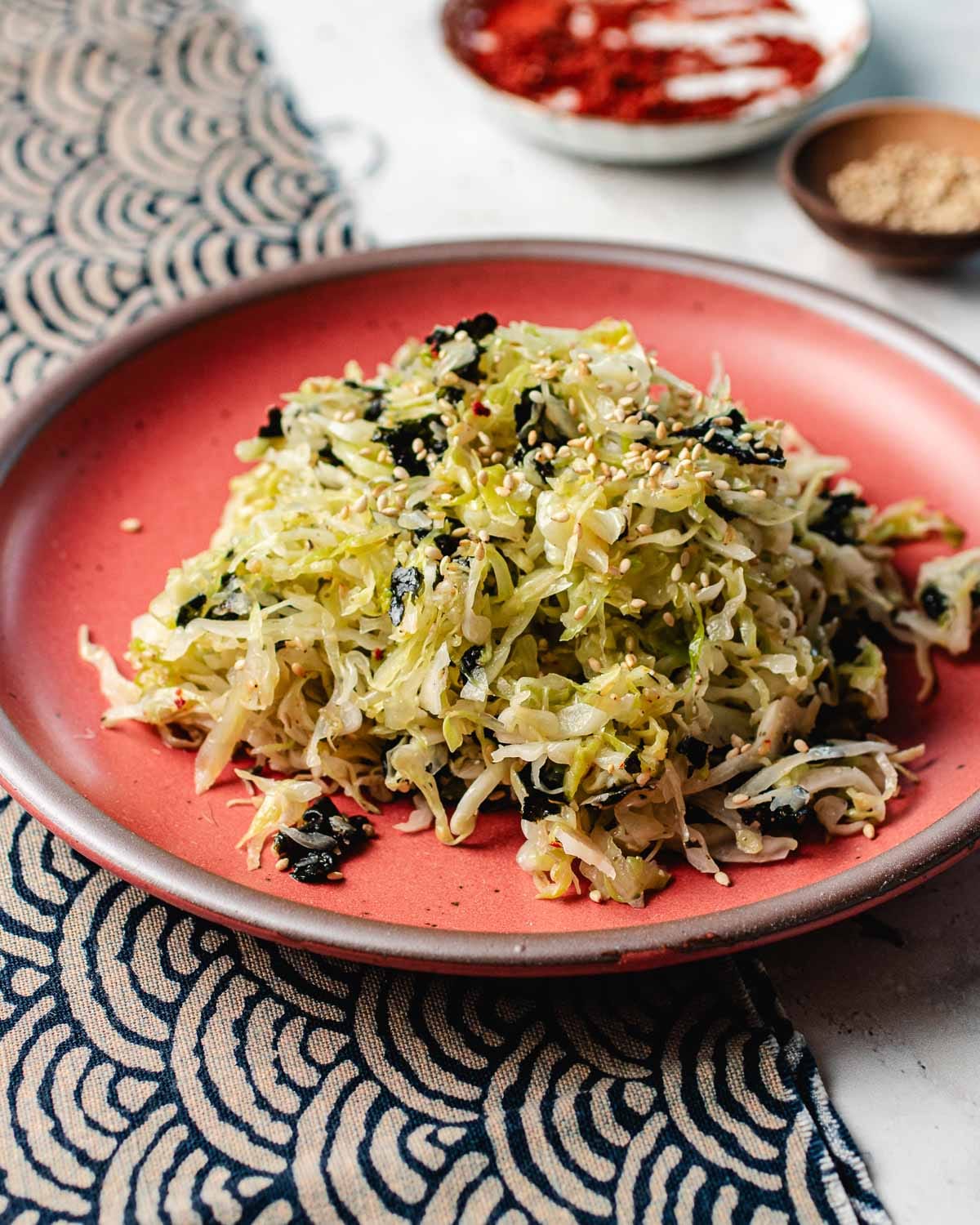
How This Cabbage Salad Came to Be

I’ve always loved cabbage, especially Napa cabbage – it’s soft, juicy and sweet. But green cabbage is more common in the U.S. — it’s drier and denser. So I started thinking: how can I make it easier (and tastier) to eat?
This recipe is my answer. A quick microwave steam softens the cabbage just enough while keeping it crisp, and a sprinkle of crushed seaweed snack at the end adds that salty, punchy Korean flavor I love.
Key Ingredient Notes

- Green cabbage: Green cabbage is denser and less sweet. But when thinly shredded and lightly microwaved, it turns surprisingly crisp and easy to eat. It’s also widely accessible, which makes this dish super practical.
- Seaweed snack: This is my secret flavor booster. I crush roasted seaweed sheets by hand and mix them in at the end for that salty, umami-packed Korean touch. I highly recommend it!
How to make Korean cabbage salad
Here are the key steps that make this cabbage dish turn out so good every time. I’ll walk you through why we do it this way, especially for green cabbage. For the full ingredient list and instructions, just scroll down to the recipe card below.
- Shred the cabbage thin—this makes green cabbage more enjoyable
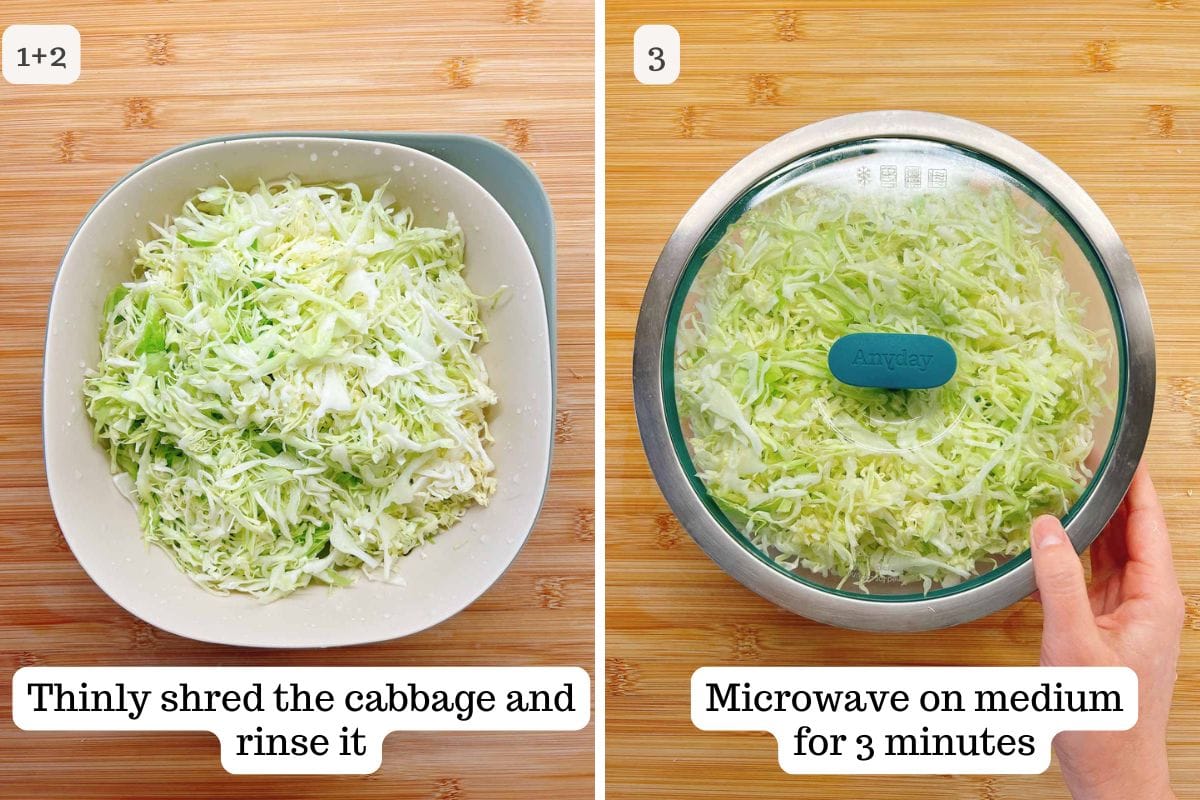
- Green cabbage is firmer and drier than the cabbage I grew up eating in Asia. So to make it easier to eat and digest, I always slice it super thin. A mandolin works best for long, even ribbons, but a sharp knife will do in a pinch. You should end up with about 13 oz (369g) of thin shreds.
- Tip: If your cabbage pieces are too thick, they won’t soften properly in the microwave and might taste too raw.
- Rinse and drain—but don’t worry about drying it completely
- After slicing, rinse the cabbage to refresh it, then shake off the excess water. It doesn’t have to be bone dry. In fact, I rely on that leftover surface moisture to create a light steam effect in the microwave—it’s part of what makes this method work so well.
- Microwaving is faster—and green cabbage handles it better than any other type
- I started using the microwave for cabbage during hot weather when I didn’t want to boil or salt anything. And it turns out, green cabbage is perfect for this shortcut. It’s sturdy enough to soften without turning mushy. After 3 minutes on medium power, it becomes tender but still has crunch—something you won’t get from Napa or red cabbage using this method.
- Tip: Use a large, flat-bottomed bowl and cover it loosely with a lid or plate. Medium power is key—high power will overcook the edges before the center even softens.
- Cool the cabbage and squeeze out excess liquid
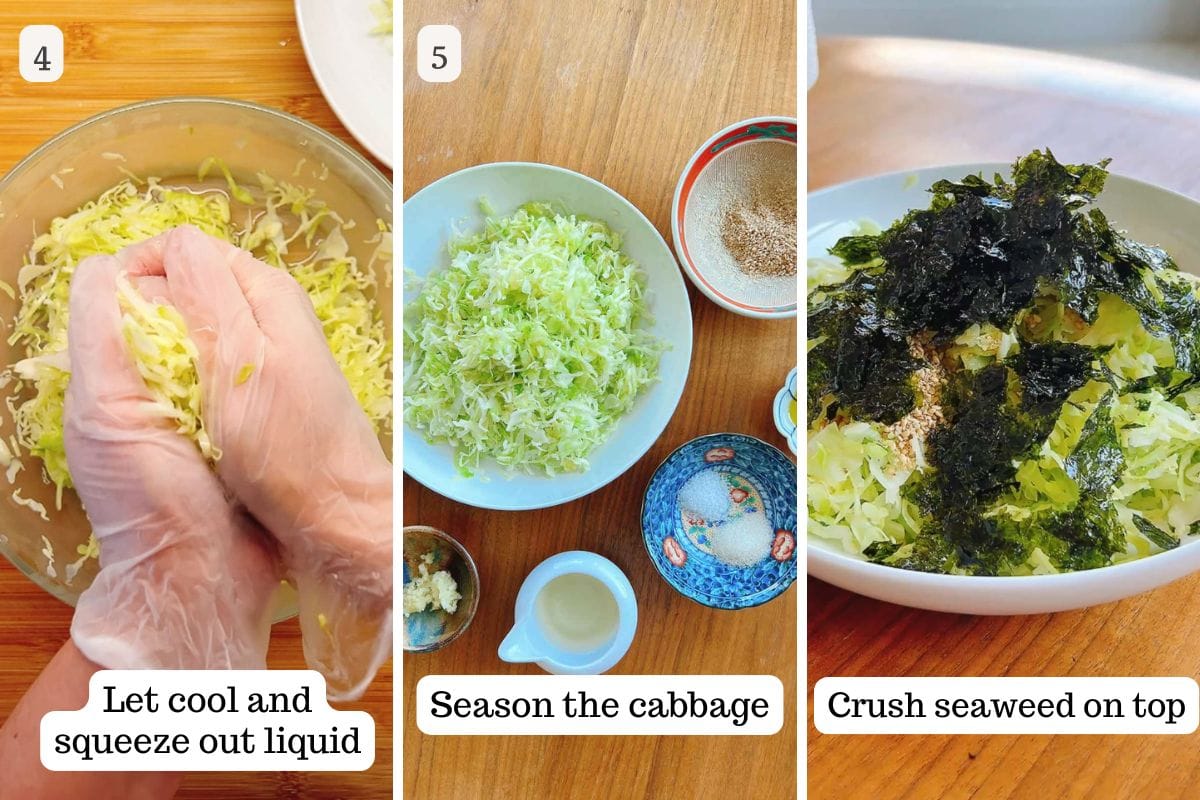
- Once the cabbage is cool enough to touch, use your hands to gently squeeze out any extra liquid. This helps concentrate the flavor and gives the salad a cleaner, crisper bite.
- Toss everything together—including the seasonings and seaweed
- Add the cabbage to a mixing bowl and toss it with grated garlic, sesame seeds, rice vinegar, sea salt, sugar, sesame oil, and olive oil. Then crush the seaweed snack directly into the bowl. Mix everything by hand so the flavors coat evenly—it should feel light, savory, and balanced.
What proteins pair well with the cabbage
This cabbage banchan is super versatile—it adds a crisp, tangy contrast to richer mains and makes a great veggie base for quick lunches.
- For a Korean-style meal, try it with juicy grilled meats like Kalbi (Korean short ribs) or Air Fryer Short Ribs. It also pairs beautifully with spicy, bold flavors like Whole30 Gochujang Salmon or a simple Beef Bulgogi Bowl.
- You can also mix it into a quick stir-fry meal with Kimchi Beef Stir Fry, or serve it on the side of Kimchi Cauliflower Fried Rice for a lighter, plant-forward meal.
Try these Korean side dishes next!
If you’re building a Korean-style meal at home, here are a few more easy and flavorful sides that go perfectly with this cabbage salad:
- Korean Carrot Salad – Bright, crunchy, and lightly spicy.
- Korean Zucchini Side Dish – Thinly sliced then sautéed with sesame and garlic.
- Mung Bean Sprout Salad – A classic banchan that’s light, nutty, and super refreshing.
Korean cabbage salad recipe
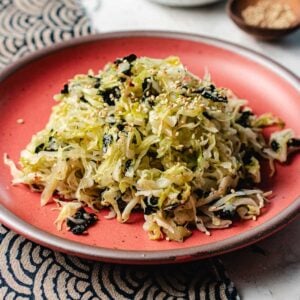
Video
Ingredients
- 15 oz green cabbage half of one small
- 1 tbsp roasted white sesame seeds
- 0.21 oz garlic grated (or ½ to ¼ tsp garlic granules)
- ½ tsp coarse sea salt
- 1 to 1.5 tbsp rice vinegar
- ½ to ¾ tsp sugar
- 1 tbsp toasted sesame oil
- ½ tbsp olive oil
- 5 gram seaweed snack
- Light sprinkle gochugaru optional
Instructions
- Thinly slice the cabbage: Use a mandolin slicer to thinly slice the cabbage into long, thin strips. You should yield about 13 oz (369g) of thinly shredded cabbage.
- Rinse and drain: Rinse the cabbage, then drain and shake off the excess water. The cabbage doesn’t need to be completely dry, as the moisture will help “steam” it.
- Microwave the cabbage: Transfer the cabbage into a microwave-safe bowl. I recommend using a large bowl with a flat bottom and a lid. Microwave on medium power for 3 minutes.
- [Optional] Toast and grind the sesame seeds: Dry roast the sesame seeds in a small cast iron skillet over medium-low heat for about 5-6 minutes, until fragrant. Shift the pan back and forth to prevent burning. After roasting, transfer to a mortar and pestle and grind into a coarse powder.
- Set aside the garlic: set aside the grated garlic.
- Cool and squeeze the cabbage: After microwaving, let the cabbage cool. Once it’s no longer hot, use your hands to squeeze out the liquid.
- Season and mix: Transfer the cabbage to a large mixing bowl. Add the seasonings—from sesame seeds to olive oil—and use your hands to toss and incorporate. Finally, crush the seaweed sheets by hand into the bowl and toss again to combine.
- Taste and finish: Taste and adjust before serving. If you prefer a bit of spice, sprinkle with gochugaru flakes. Serve at room temperature or chilled.
Notes
- Green cabbage selection: Choose fresh, crisp green cabbage that feels heavy in the hand. These taste the freshest and have the most juicy, sweet, and crisp texture.
- Garlic: Fresh grated garlic gives a punchier flavor. If you’re sensitive to raw garlic, garlic granules are a great substitute with a much more mellow taste.
- Storage & make-ahead: This cabbage salad stores well. It should last one week in the fridge.
Nutrition
Nutrition information is automatically calculated, so should only be used as an approximation.
Made a dish and loved it? Please rate the recipe and leave a comment in the section below! It helps my blog grow organically, allowing me to continue sharing free and awesome content with you. Thank you!
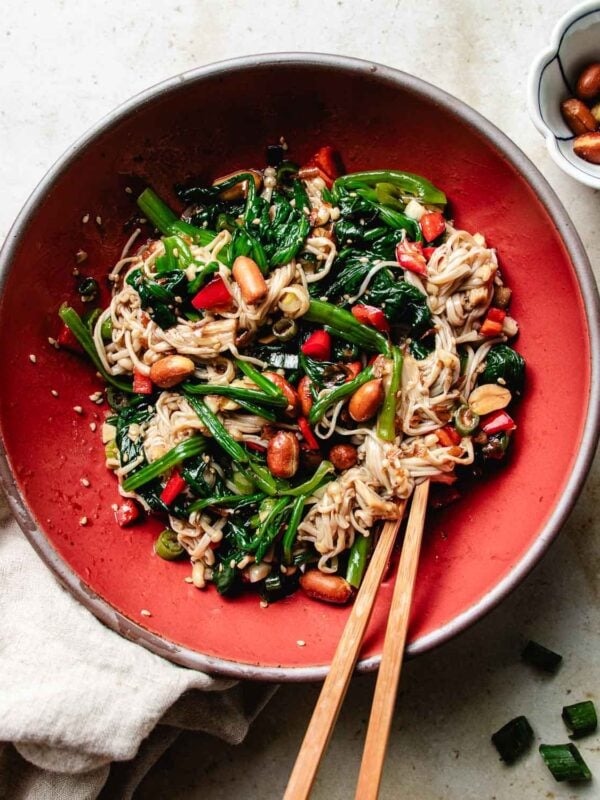


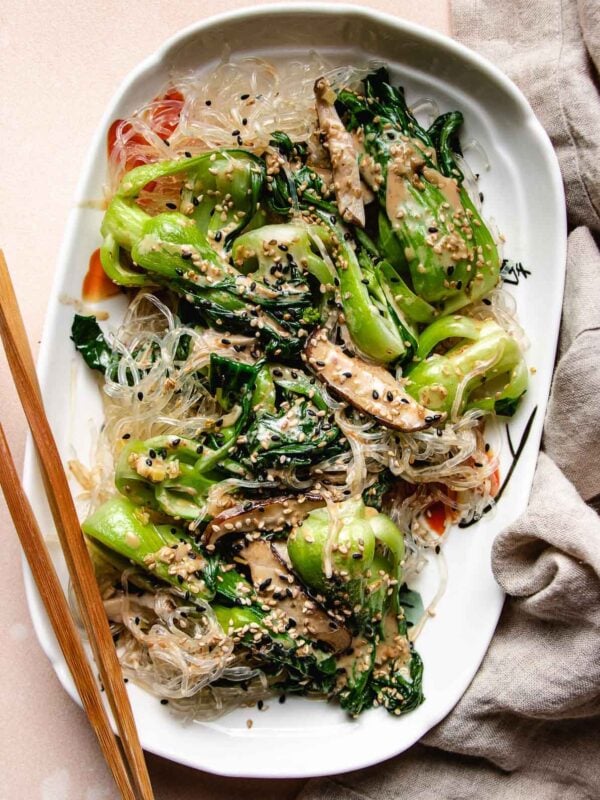









Hi! Your recipe are very easy to follow. I will definitely try this cabbage recipe.
Do you have a cucumber salad in Korean flavors.
Thank you! Yes I have many cucumber dishes.
For korean version – https://iheartumami.com/cucumber-kimchi/
Or https://iheartumami.com/korean-cucumber-salad/
This is my second time making this salad. I love it! Question: when you serve this salad to guests, do you tend to make it warm or cold? For example, do you make it the day before? Or is it better made and served the day of?
I like to serve it the day off to my guests – either slightly chilled or room temperature. If I’m just making it for myself, a few days in the fridge still tastes good, too!
I would also put this salad on top of a beef or pork bao. Also, on top of a fish taco. Thank you!
That sounds perfect! I will do the same, too! 🙂
Delicious
Thank you so much.
This salad is so good! I don’t have a mandolin, so I sliced it in my food processor. It was as thin, so I added 2 more minutes in the microwave. It cooked perfectly and after the seasoning were added, it became so tasty! I will be making this on repeat!
Wonderful! so happy to hear and thanks for sharing!